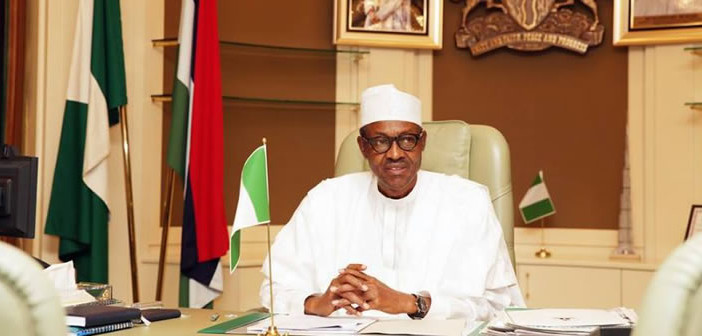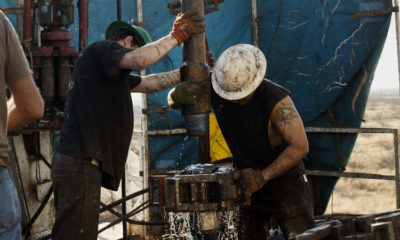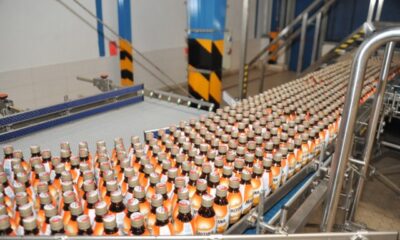Economy
All Eyes on MPC as GDP Growth Doubles to 1.4% in Q3
Published
7 years agoon

- All Eyes on MPC as GDP Growth Doubles to 1.4% in Q3
Following the report released Monday by the National Bureau of Statistics (NBS) showing that the Nigerian economy grew by 1.4 per cent in the third quarter (Q3) of this year, effectively doubling the revised growth rate of 0.72 per cent recorded in the second quarter, market analysts and economists were of the view that the Monetary Policy Committee (MPC) of the Central Bank of Nigeria (CBN) should at its two-day meeting slated to start Tuesday, commence gradual easing of its monetary policy.
Their position was further reinforced in the NBS report which showed that economic expansion in the third quarter was solely driven by Oil Sector Gross Domestic Product (GDP) which grew by 25.89 per cent in the third quarter, in contrast to Non-Oil GDP which contracted by 0.76 per cent during the period.
The NBS in its latest figures released Monday revealed that the nation’s GDP grew by 1.40 per cent in Q3 2017 (year-on-year), marking the second consecutive growth since the economy exited the recession in the second quarter (Q2) of 2017.
The new growth rate was 3.74 percentage points higher than the rate recorded in the corresponding quarter of 2016 (-2.34 per cent) and higher by 0.68 percentage points than the GDP growth rate recorded in the preceding quarter (Q2 2017), having been revised by the statistical agency to 0.72 per cent, from 0.55 per cent.
The Q2 growth rate was revised, following revisions by Nigerian National Petroleum Corporation (NNPC) to oil output, culminating in revisions to Oil GDP in the period.
After contracting for five consecutive quarters, the Nigerian economy had exited the recession in Q2 2017, growing at 0.55 per cent (now revised to 0.72 per cent).
Analysing the Q3 economic output, the NBS put real GDP growth at 8.97 per cent quarter-on-quarter.
In the quarter under review, aggregate GDP stood at N29,451,303.99 million in nominal terms, which was higher when compared to N26,537,651.01 million in Q3 2016, resulting in a nominal GDP growth of 10.98 per cent. The growth was higher relative to the one recorded in Q3 2016 by 9.15 per cent.
Real growth of the oil sector was put at 25.89 per cent (year-on-year) in Q3 2017, representing an increase of 48.92 per cent relative to the rate recorded in the corresponding quarter of 2016 and an increase of 22.36 per cent compared to Q2 2017, which was revised from 1.64 per cent to 3.53 per cent. Quarter-on-quarter, the oil sector grew by 21.10 per cent in Q3 2017.
As a share of the economy, the oil sector contributed 10.04 per cent of total real GDP in Q3 2017, up from the figure recorded in the corresponding period of 2016 and up from the preceding quarter when it contributed 8.09 per cent and 9.04 per cent to GDP respectively.
The non-oil sector, on the other hand, contracted by 0.76 per cent in real terms during the reference quarter. This was lower by -0.79 percentage points compared to the same quarter in 2016 and -1.20 percentage points lower the figure recorded in the second quarter of 2017.
In real terms, the non-oil sector contributed 89.96 per cent to the nation’s GDP, lower than the share recorded in the third quarter of 2016 (91.91 per cent) and in the second quarter of 2017 (90.96 per cent).
The third quarter of 2017 saw the mining & quarrying sector (which consists of crude petroleum and natural gas, coal mining, metal ore and quarrying and other minerals sub-activities) record a nominal growth of 101.36 per cent (year-on-year), taking into account revised Q2 2017 data.
Crude petroleum and natural gas recorded a growth rate of 102.79 per cent, metal ore recorded 22.75 per cent and quarrying and other metals recorded 27.94 per cent respectively, maintaining strong year-on-year growth compared to the corresponding quarter growth rates of 2016 at 4.09 per cent, 17.11 per cent and 16.46 per cent respectively.
The mining & quarrying sector contributed 11.17 per cent to overall GDP in the third quarter of 2017, higher than the sector’s contribution in the third quarter of 2016 and the previous quarter at 6.15 per cent and 9.08 per cent respectively.
In real terms, the mining and quarrying sector grew by 25.44 per cent (year-on-year) in the third quarter of 2017. Compared to the third quarter of 2016 and second quarter 2017, it was higher by 48.09 percentage points and 21.93 percentage points respectively. Quarter-on-quarter, the sector recorded a growth rate of 20.84 per cent.
The contribution of the mining and quarrying sector to real GDP in the third quarter of 2017 stood at 10.19 per cent, higher than the 8.24 per cent recorded in the corresponding quarter of 2016, and higher than the figure recorded in the second quarter of 2017, which was revised to 9.19 per cent.
The agricultural sector grew by 12.50 per cent year-on-year in nominal terms, showing an increase over the same quarter of 2016 by 5.13 percentage points but a slight decline by -0.03 percentage points when compared to the Q2 growth rate of 12.53 per cent.
Crop production remained the major driver of the sector, accounting for 91.97 per cent of the overall nominal growth of the sector.
In the third quarter of 2017, agriculture contributed 24.44 per cent to nominal GDP, which was higher than the rates recorded in the third quarter of 2016 and second quarter of 2017 at 24.11 per cent and 19.28 per cent respectively.
The manufacturing sector comprising thirteen activities posted a nominal GDP growth of 10.32 per cent (year-on-year) in Q3 2017, which was 13.25 percentage points higher than the growth recorded in the corresponding period of 2016 (-2.93 per cent), but -5.65 percentage points lower than the preceding quarter’s growth of 15.97 per cent. Quarter-on-quarter growth of the sector was put at 3.21 per cent.
The contribution of manufacturing to nominal GDP in the third quarter was 8.55 per cent, lower than the figures recorded in the corresponding period of 2016 at 8.60 per cent and for the second quarter of 2017 at 9.02 per cent.
Real GDP growth in the manufacturing sector in the current quarter of 2017 was -2.85 per cent (year-on-year), higher than the same quarter of 2016 by 1.53 percentage points and -3.49 percentage points lower than figure recorded in the preceding quarter.
The growth of the sector on a quarter-on-quarter basis stood at 2.59 per cent while real contribution to GDP in Q3 2017 was 8.81 per cent.
The electricity, gas, steam and air conditioning supply sector recorded a year-on-year growth of 25.88 per cent in the third quarter of 2017. This was 21.91 percentage points higher than the 3.97 per cent growth rate recorded in the corresponding quarter of 2016, but -33.17 percentage points lower than the 59.05 per cent recorded in Q2 2017.
Quarter–on-quarter, the sector recorded a contraction of 10.14 per cent.
The contribution of electricity, gas, steam and air conditioning supply to nominal GDP in the quarter under review was 0.54 per cent higher than the contribution made in the corresponding quarter of 2016 (0.48 per cent).
In real terms, the sector grew by 11.46 per cent in Q3 2017, an increase from the -6.68 per cent recorded in the same quarter of 2016 but lower than the second quarter of 2017 growth rate of 35.50 per cent.
Quarter-on-quarter, the sector dropped at a rate of -10.63 per cent. The contribution of electricity, gas, steam and air conditioning supply to real GDP in the quarter was 0.36 per cent.
The real growth rate of the construction sector in the third quarter of 2017 was recorded at -0.46 per cent (year-on-year), higher by 5.67 percentage points from the figure recorded in the previous year.
Relative to the preceding quarter, there was a decrease of -0.59 percentage points. Quarter-on-quarter, the sector grew by -22.07 per cent in real terms.
In the review quarter, its contribution to total real GDP was put at 3.04 per cent, lower than its contribution of 3.10 per cent in the previous year and in the previous quarter when it contributed 4.25 per cent.
For trade, the nominal year-on-year growth rate in the third quarter of 2017 stood at 0.47 per cent, indicating a drop by -14.93 percentage points and -4.38 percentage points lower compared to the third quarter of 2016 and second quarter of 2017 respectively.
The quarter-on-quarter growth rate for the trade sector was put at 1.57 per cent, while the sector’s contribution to nominal GDP in the third quarter of 2017 was 17.96 per cent, lower than the contribution in the same quarter of the previous year of 19.85 per cent. It was also lower than in the preceding quarter of 19.27 per cent.
In real terms, the trade sector’s year-on-year growth stood at -1.74 per cent, which was -0.35 percentage points lower than the figure recorded in the corresponding period in 2016 and -0.12 percentage points lower than the preceding quarter.
Quarter-on-quarter, growth stood at 1.50 per cent but in real terms, the trade sector’s contribution to GDP was 15.90 per cent lower than the 16.40 per cent recorded in the corresponding quarter of 2016. This was also lower than the 17.07 per cent recorded in the second quarter of 2017.
Also, in nominal terms, accommodation and food services grew by 8.74 per cent year-on-year in the third quarter of 2017, representing an increase of 6.02 percentage points relative to the same quarter of 2016, when the growth rate was 2.73 per cent.
Growth was also higher than the preceding quarter by 2.67 percentage points when growth was put at 6.08 per cent.
The sector’s contribution to nominal GDP was 0.84 per cent in the third quarter of 2017, slightly lower than the 0.86 per cent recorded in the previous year.
The real year-on-year growth rate for the sector in Q3 2017 was 0.18 per cent, higher by 5.06 percentage points of -4.88 per cent recorded in Q2 2016. Relative to the preceding quarter, the accommodation and food services sector’s growth rate was 4.23 percentage points higher than the -4.05 per cent recorded Q2 2017.
Quarter-on-quarter, real growth was put at 48.87 per cent while in the third quarter of 2017, the sector represented 0.86 per cent of real GDP, which was lower by a small margin than the contribution of 0.87 per cent recorded in the third quarter of 2016, but higher than the second quarter 2017 contribution of 0.63 per cent.
In the transportation and storage sector made up of six activities, a 0.58 per cent growth in nominal terms was posted in the third quarter of 2017 (year-on-year). This rate was lower relative to the figure recorded (19.69 per cent) for the corresponding quarter of 2016 and 2.17 per cent in the previous quarter.
The fastest growing activity in the third quarter was air transport with a growth rate of 9.13 per cent year-on-year. Air transportation was followed by rail transport and pipelines at 4.91 per cent.
Transport contributed 1.43 per cent to nominal GDP, a drop from the 1.58 per cent recorded in the corresponding period of 2016, but higher than 1.40 per cent recorded in the second quarter of 2017.
In real terms, the transportation and storage sector contracted by 6.25 per cent in Q3 of 2017. This rate represented a decline of -6.98 percentage points relative to the same quarter of the previous year and a decrease of -0.07 percentage points relative to the preceding quarter.
Quarter-on-Quarter, growth was put at 11.30 per cent in real terms. The contribution of the sector to real GDP in the third quarter of 2017 totalled 1.11 per cent, a drop from 1.20 per cent recorded in the previous year, but higher than 1.09 per cent recorded in the second quarter of 2017.
The information and communications sector comprising the four activities of telecommunications and information services; publishing; motion picture, sound recording and music production; and broadcasting, declined in nominal terms contracted by 2.66 per cent (year-on-year) in the third quarter of 2017, a -11.92 percentage points decrease from 9.26 per cent recorded in the same quarter of 2016.
This was also -5.31 per cent points lower than the rate recorded in the preceding quarter while the quarter-on-quarter growth rate was put at -15.87 per cent.
The information and communications sector contributed 8.69 per cent to total nominal GDP in the third quarter of 2017, lower than the 9.91 per cent recorded in the same quarter of 2016 and 11.26 per cent in Q2 2017.
The sector slowed by -4.48 per cent in real terms year on year in Q3 2017. From the rate recorded in the corresponding period of 2016, there was a decline by -5.58 percentage points while quarter-on-quarter, the sector recorded a contraction of 15.77 per cent in real terms.
Of the total real GDP, the sector contributed 9.56 per cent in the third quarter of 2017, lower than the same quarter of the previous year and the preceding quarter by 10.15 per cent and 12.37 per cent respectively.
Similarly, nominal growth in the arts, entertainment and recreation sector was put at 3.45 per cent in the third quarter 2017 (year-on-year), representing a decrease of -9.35 percentage points relative to the same period a year earlier, and a decline 1.82 percentage points compared with the preceding quarter.
On a quarterly basis, growth was recorded at -11.74 per cent. The activity contributed 0.19 per cent to total nominal GDP, lower from the 0.20 per cent recorded in the third quarter of 2016 and equally lower than the 0.23 per cent it contributed in the preceding quarter of 2017.
In real terms, the activity grew by 0.44 per cent year-on-year, which was lower than the rate recorded in third quarter of 2016 by -1.54 percentage points, but higher by 1.06 percentage points when compared with that of the preceding quarter.
Quarter-on-quarter, growth decreased by -11.75 per cent in real terms. The arts, entertainment and recreation sector’s contributed 0.18 per cent to real GDP in the third quarter of 2017, which was relatively lower compared with 0.19 per cent recorded in the previous year and lower than the 0.23 per cent recorded in the second quarter of 2017.
Presidency Attributes Growth to Policies
Reacting to the GDP growth numbers released Monday by the NBS, the presidency said the general improvement in economic output was triggered by improvements in the oil, agriculture and industrial sectors.
A statement by a media aide in the presidency, Mr. Laolu Akande, quoted the Special Adviser to the President on Economic Matters, Dr. Yemi Dipeolu, as describing the improvement as a continuation of the 0.55 per cent (revised to 0.72 per cent) growth recorded in Q2 2017, which led Nigeria out of the recession.
Akande said the Muhammadu Buhari administration welcomed the new growth figures and will continue to work diligently to ensure inclusive growth.
He said Dipeolu listed the factors that aided growth during the third quarter of the year to include the Social Intervention Programme, Anchor Borrowers’ Scheme, longstanding Budget Support Facilities to the states, plus other bailout packages, which ensured the comprehensive payment of workers’ salary and pension backlogs, among others.
“Equally, the federal government will be ramping up the implementation pace of the Economic Recovery and Growth Plan,” Akande said.
Dipeolu, who described the 1.4 per cent GDP growth rate as a steady continuation of the positive growth recorded in the second quarter of this year, observed that it was consistent with improvements in other indicators.
“The positive growth in Q3 was consistent with the improvements in other indicators. Foreign exchange reserves have risen to nearly $34 billion while stock market and purchasing managers indices have also been positive.
“The naira exchange rate has stabilised while inflation has declined to 15.91 per cent from 18.7 per cent in January 2017. While inflation is not declining as fast as desirable, it is approaching the estimated target of 15.74% for the year in the Economic Recovery and Growth Plan.
“Agricultural growth was 3.06 per cent in the third quarter of 2017, maintaining the positive growth of the sector even when there was a slowdown in the rest of the economy.
“The industrial sector grew at 8.83 per cent mostly due to mining and quarrying. The oil sector grew very strongly as forecast in the ERGP and partly as a result of the policy actions in the plan to restore growth in the sector.
“The service sector is yet to recover but should soon begin to be positively affected by improvements in the real economy and the effects of the dedicated and focused capital spending of over N1.2 trillion on infrastructure by the federal government.
“It is expected that the economy will continue to grow given these developments and the reforms and improvements in the business environment shown by the upward movement of 24 places in the recently released World Bank’s Ease of Doing Business report which was better than the target of 20 places specified in the ERGP.
“The overall picture that emerges is that the economy is on the path of recovery. As inflation trends downwards and with the steady implementation of the ERGP, real growth should soon be realised across all sectors in a mutually reinforcing manner,” Dipeolu stated.
All Eyes on MPC
Also commenting on the NBS report, the Director General of the West African Institute for Financial and Economic Management, Prof. Akpan Ekpo, Monday urged the Monetary Policy Committee (MPC) of the central bank to commence gradual easing of its monetary policies at its meeting Tuesday.
“If I am still part of the MPC, I will vote for a reduction of the interest rate to about 13 per cent. GDP growth is now 1.4 per cent and inflation has come down to about 15 per cent. So now, the CBN should support that fiscal push by lowering the interest rate.
“The forex market is stable at about N360 to a dollar. So, this is the time for monetary policy to be accommodative. But we must not forget that we are still in an era of stagflation because unemployment is still very high, and inflation is still at double-digits.
“So, in the long run, we still need to make sure that the structure of our economy changes,” Ekpo who was a former MPC member stated.
Also, the chief executive of Financial Derivatives Company Limited, Mr. Bismarck Rewane, stressed the need for the central bank to loosen its tight monetary policy.
According to him, the fact that all other sectors in the GDP report apart from oil and agriculture were negative, should be a source of concern to the MPC.
“So, if you take away oil, we are technically still in a recession and that is because our interest rate is still high. So, the central bank needs to bring down the interest rate.
“All the interest rate sensitive sectors showed negative returns. The central bank must understand that it is time to bring down the interest rate. You can’t wait for the patient to get well before you begin treatment.
“The central bank is the only doctor I know that is saying the patient should get well before they can administer medicine. It is time to give a boost to the economy,” Rewane argued.
Is the CEO and Founder of Investors King Limited. He is a seasoned foreign exchange research analyst and a published author on Yahoo Finance, Business Insider, Nasdaq, Entrepreneur.com, Investorplace, and other prominent platforms. With over two decades of experience in global financial markets, Olukoya is well-recognized in the industry.

You may like
-
70 Million Poorest of The Poor Nigerians To Get N75,000 From FG
-
Nigeria Surpasses OPEC Quota with 1.51 Million bpd, Targets 2.06 Million in 2025
-
Global Investors Commit $7.6 Billion to Nigeria’s Development at AIF 2024
-
Nigeria-China Trade Strengthened as Grimaldi Introduces Direct Shipping Line
-
Nigeria’s GDP Records 3.46% Growth in Q3 Spurred by Non-Oil Sector
-
President Tinubu Presents N47.9trn 2025 Budget As Debt Servicing, Security, Infrastructure Take Lion Shares













